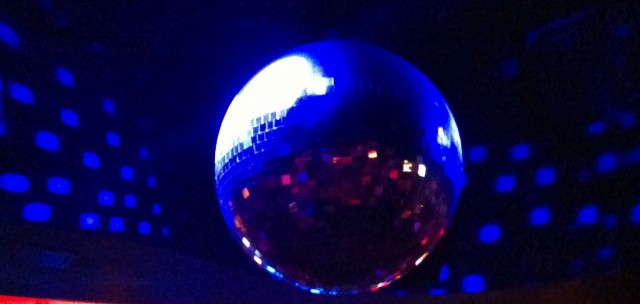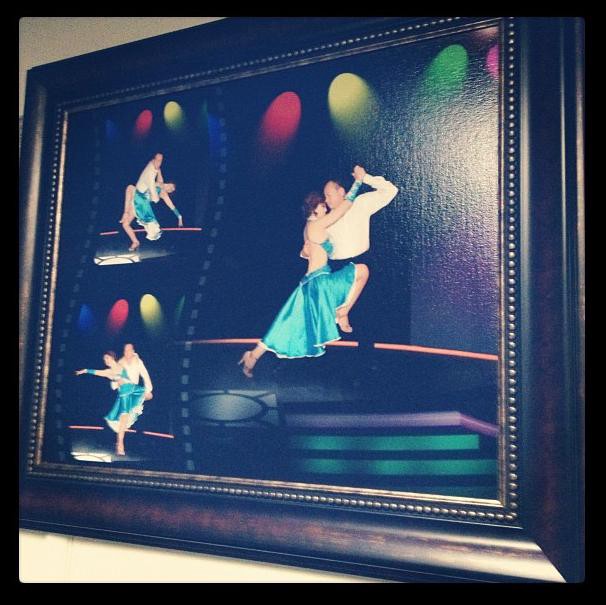When My Parents Remodeled Their Living Room

The contractor and his team came out of nowhere. I had come home from school one day and there they were, tearing up the carpets in the living room and smashing the discolored tiles underneath with mallets that equaled my size and weight. I had just turned nine and my family had just moved into an old house in Southern California.
My quiet neighborhood, as I knew it in the early ’90s, was not prepared for a family like mine to settle in what appeared to be blissful, suburban domesticity. My father worked for the Ford Motor Company as an auto worker, and my mother worked at a hair salon. In my short lifetime, we had lived with very little belongings in a guest room at my uncle’s house, then a series of one-bedroom apartments in bad neighborhoods. Finally, after years of thriftiness and saving, my parents had scraped together enough money for a fixer-upper, and fix it up they did.
By day, my parents were two people struggling to provide their family with a solid middle class life. At night, my parents sparkled — my mother in gold sequined dresses and my father in a slick suit. My parents had competed in ballroom dance competitions before I had been born, and after we moved, they joined a dance team and were performing dazzling late night shows at a club called “The Star.”
The moment my mother stepped into our new house, she insisted that the living room should be replaced by a ballroom — or as close to a ballroom as she could get. Soon, the contractor and his team of workers were gone, and what remained was a floor tiled with marbled porcelain, an entire wall outfitted with a mirror, a complex set of lighting equipment built into the ceiling, and a mirrored disco ball that slowly turned at the flip of a switch, spinning colored lights around the room.
Across the street, the neighboring family had two children the same age as my older brother and me, and we’d sometimes hang out after school to watch cartoons — Steven Spielberg’s Tiny Toon Adventures, Chip ‘n Dale Rescue Rangers — whatever was on at the time. While the others were fixated on the animated characters on the screen, I would sneak glances at the furniture surrounding us in the room. The coffee table was usually lined with various magazines. There was a bookcase filled with a variety of titles. A fireplace mantle and work desk had family portraits on them. It was the kind of living room I imagined every family in the neighborhood had.
“Can we keep the couch and coffee table in the ballroom instead of storing them in the guest room?” I once asked my mother as she was on her hands and knees wiping down the porcelain floor.
“No, silly,” she said. “There wouldn’t be enough room to dance.”
“How about a fireplace?” I asked, and then after considering my younger brother, “How will we explain to Steven how Santa Claus gets in?”
“Santa can still get in,” she said plainly. “I mailed him a key to our house.”
When I visited other people’s houses, I’d take off my shoes so I wouldn’t track dirt into their homes. I’d put them on a shoe rack or in a closet by the front door, and then note the number of heels I saw. My mother had a closet filled with close to twenty pairs — mostly for dancing — all lined up neatly on various racks. Each year, some pairs would wear out and be replaced by new ones: they were gold, silver, red and black, with names like Alexia and Lorraine. When Alexia would wear out, my mother would pull out the Showtime Dance Shoes catalogue from a drawer and point at pairs to me.
“Do you think I should go with Karina or Gabrielle?” she would ask me.
“Oh, I don’t know,” I would say, knowing very well that she had already made her decision. I wondered why the shoes were named after women and why names such as Doris, Ethel, or Maude were out of the question. They were perfectly adequate names and I held a grudge against the shoe company for their name choices. I read in it condescension, discrimination, typecasting. Worse were the men’s shoes with names such as “1026” and “1224” — why bother?
When the ballroom was completed and my father had installed a stereo system, my parents hosted a series of dance parties at our house. Our neighbors would stand in their yards or peek through their curtains at the men in dark suits and women in low-cut dresses as they entered our front door and onto the dance floor. I often wondered what they were all thinking as they looked at us. Scandalous acts of dirty dancing occurring throughout the night, maybe. They probably all whispered about my parents as they stood in their living rooms, pulled books off their shelves, sat on their couches, and put their feet up on their coffee tables.
In reality, the parties my parents threw mostly contained couples dancing in concentric circles. The couch was moved into the guest room, and folding chairs were set up around the room. The porcelain floors were lightly dusted with baby powder, which helped everyone twirl a little bit faster whenever they spun. I watched them all in a corner of the ballroom, hypnotized by the twisting and twirling that went on and on without cessation. Who needed a living room, when you could have this?
I’d always end up balled up on the floor with tired eyes. My father would come and lift me up and carry me to my bed where I fell into a deep sleep, comforted by the sounds of the Rumba, Tango, Waltz, Cha Cha, and Paso Doble.

The author’s parents recently in action.
Disco ball image by Amber Rae.
Support The Billfold
The Billfold continues to exist thanks to support from our readers. Help us continue to do our work by making a monthly pledge on Patreon or a one-time-only contribution through PayPal.
Comments